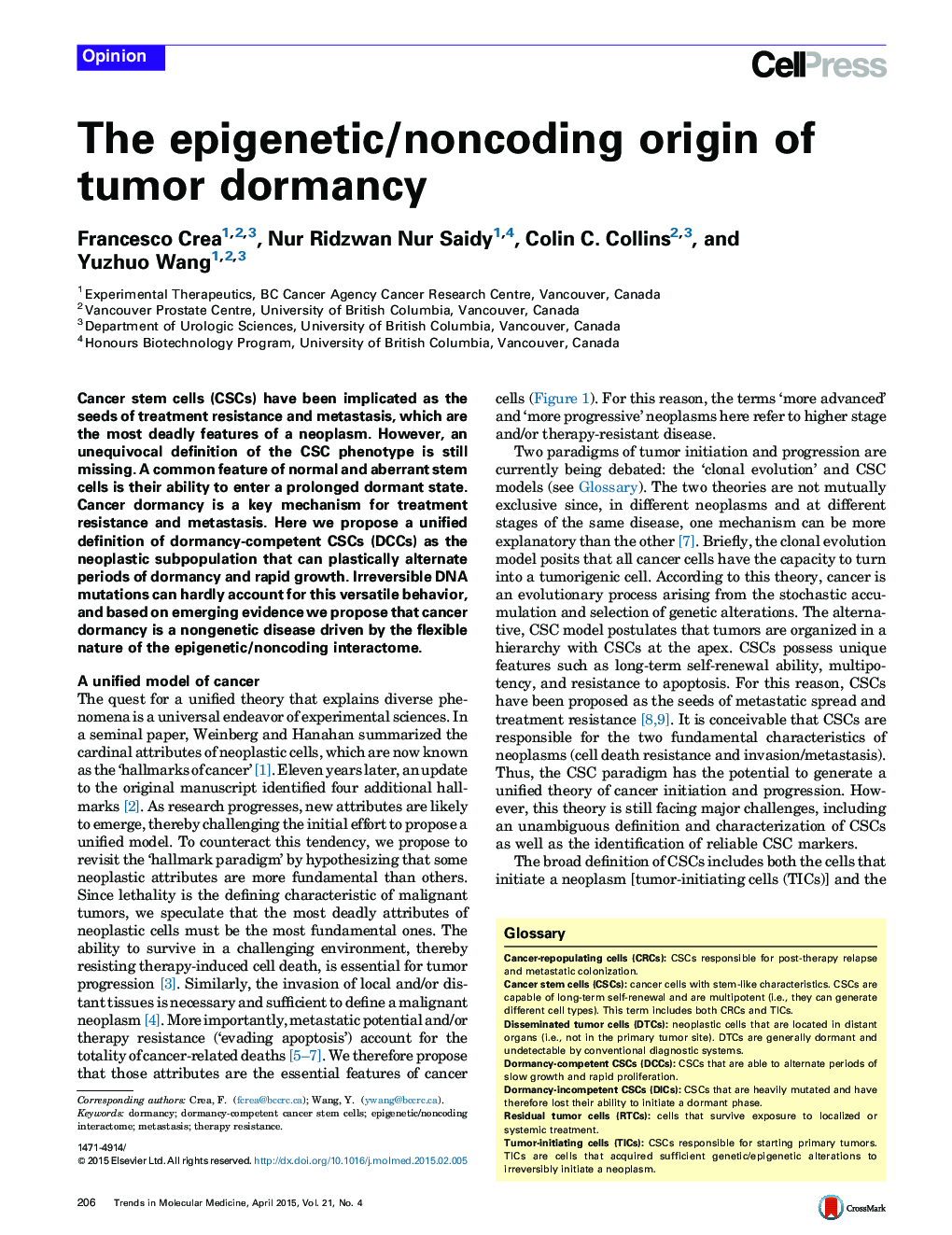| Article ID | Journal | Published Year | Pages | File Type |
|---|---|---|---|---|
| 2838487 | Trends in Molecular Medicine | 2015 | 6 Pages |
•Cancer stem cells (CSCs) can alternate between dormant and proliferative states.•Dormancy competent CSCs (DCCs) ensure proliferation, drug resistance, and metastasis.•DCC plasticity is dictated by the epigenetic/noncoding interactome.•Targeting the DCC epigenome may eradicate treatment-resistant cancers.
Cancer stem cells (CSCs) have been implicated as the seeds of treatment resistance and metastasis, which are the most deadly features of a neoplasm. However, an unequivocal definition of the CSC phenotype is still missing. A common feature of normal and aberrant stem cells is their ability to enter a prolonged dormant state. Cancer dormancy is a key mechanism for treatment resistance and metastasis. Here we propose a unified definition of dormancy-competent CSCs (DCCs) as the neoplastic subpopulation that can plastically alternate periods of dormancy and rapid growth. Irreversible DNA mutations can hardly account for this versatile behavior, and based on emerging evidence we propose that cancer dormancy is a nongenetic disease driven by the flexible nature of the epigenetic/noncoding interactome.
